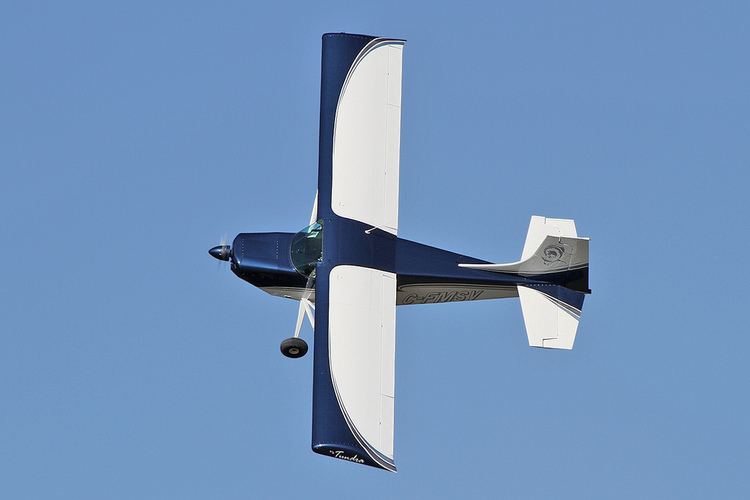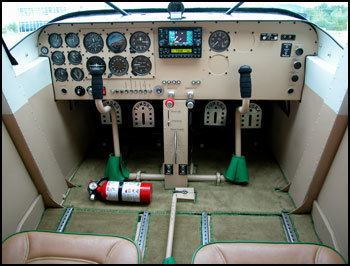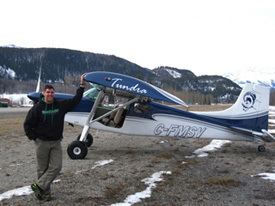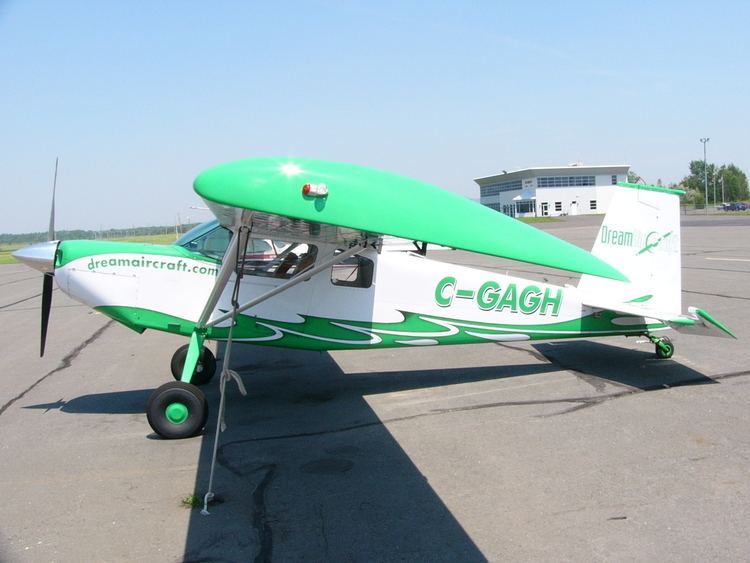Wingspan 11 m | Length 7.77 m | |
 | ||
The Dream Tundra is a robust, single-engine, high-wing monoplane designed in Canada. Seating four, its short takeoff and landing characteristics can be adapted to land, snow, or water use. It is produced as a kit for homebuilding.
Contents

Design and development

The Tundra, Dream Aircraft's first and only product to date, is a kit-built aircraft designed for robustness and STOL performance, seating four in two side-by-side rows. It is almost entirely of riveted aluminium construction, though flying surface tips are composite, and is laid out in conventional high-wing, single-engine, form.

The wing has constant chord, turned-down tips and 2° of washout. It is braced by pairs of V-struts attached to the lower fuselage longerons forward of the cabin. Four-position Fowler flaps are fitted. The tailplane and elevators are rectangular in plan, with a cutout in the latter to allow rudder movement. Fin and rudder are likewise rectangular apart from the leading edge, which has a curved fillet. Both rudder and elevators are horn balanced.

Behind the engine the cabin, under the wing, is accessed via top hinged doors on both sides. There is a separate, port side door for baggage. The flat sides of the fuselage taper to the tail. Several undercarriage configurations are available; for land based operations the Tundra builder can choose between tricycle and tailwheel gear. Both use spring cantilever main legs, with large, low pressure tires for work off soft ground; these legs are positioned at the attachment point of the wing struts for the conventional arrangement and further aft for the tricycle gear. Floats can also be fitted, with their main attachment at the base of the struts and with secondary float struts further aft. Amphibious floats (Montana 2800) may be used. The Tundra may also be equipped with skis. Takeoff roll distances with wheels, skis, and floats are respectively 125 m, 200 m, and 400 m (400 ft, 650 ft, and 1300 ft).

The first Tundra flew on 12 May 2001, powered by a 134 kW (180 hp) Textron Lycoming O-360-A flat four engine. Later Tundras have used either the 150 kW (200 hp) Textron Lycoming IO-360 flat four or the 175 kW (235 hp) Textron Lycoming O-540-B4B5 flat six. Other alterations were made to the later aircraft, principally to the undercarriage (the prototype had wheels mounted on faired V-struts with bungee sprung half-axles), to the cabin doors for ease of access, to the tailplane and fin for ease of building and by the addition of a double cabin floor for better sound insulation.
The kit manufacturer estimates the construction time at 1000 hours.
Operational history
By August 2009 35 kits had been sold, with 11 Tundras flying. About 23 have the tailwheel undercarriage and most, apart from the second prototype C-GAGH, retain the curved fin fillet of the first prototype C-GIPN.
Variants
Specifications (landplane, 200 hp)
Data from Jane's All the World's Aircraft 2010/11
General characteristics
Performance
